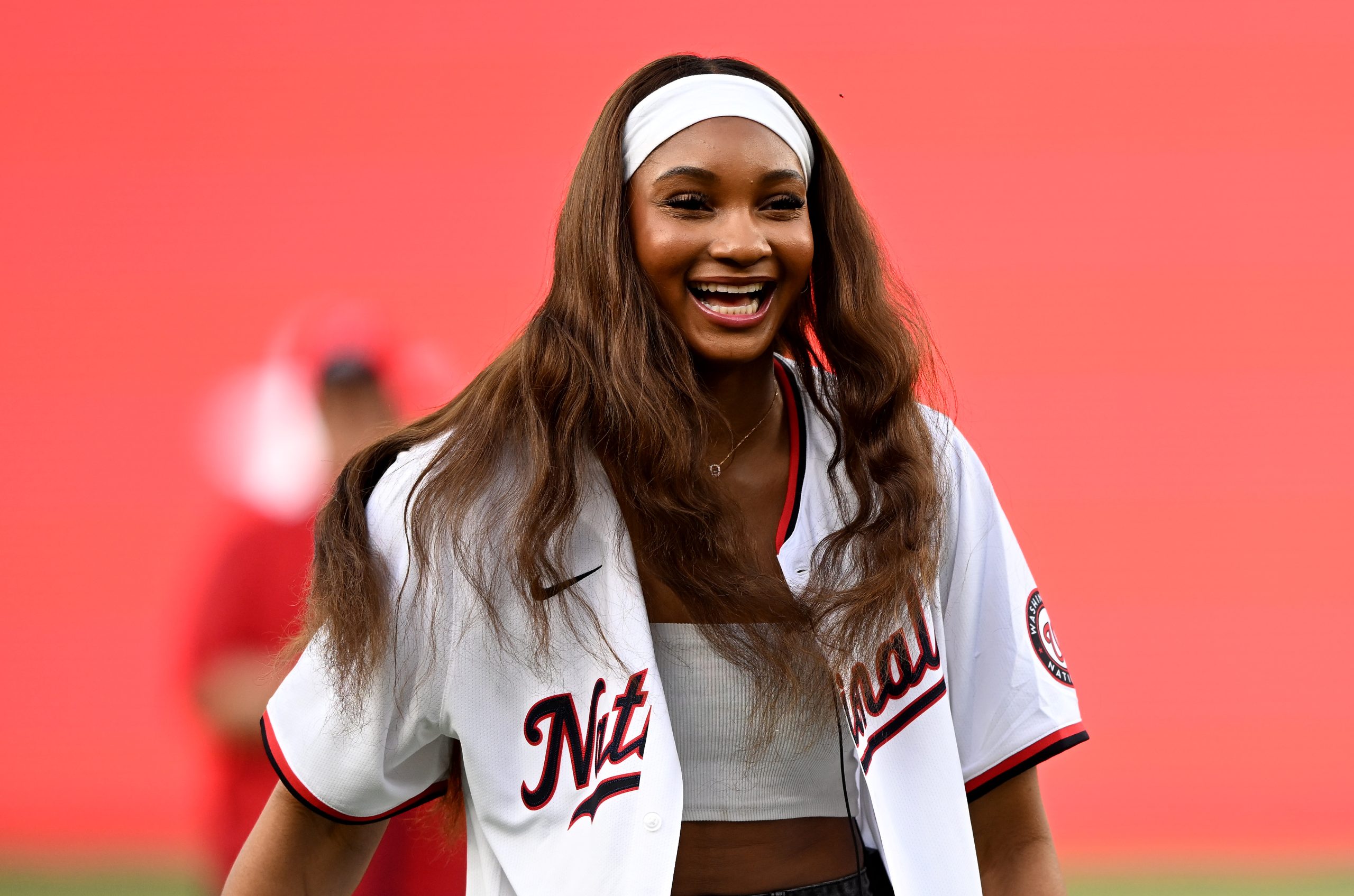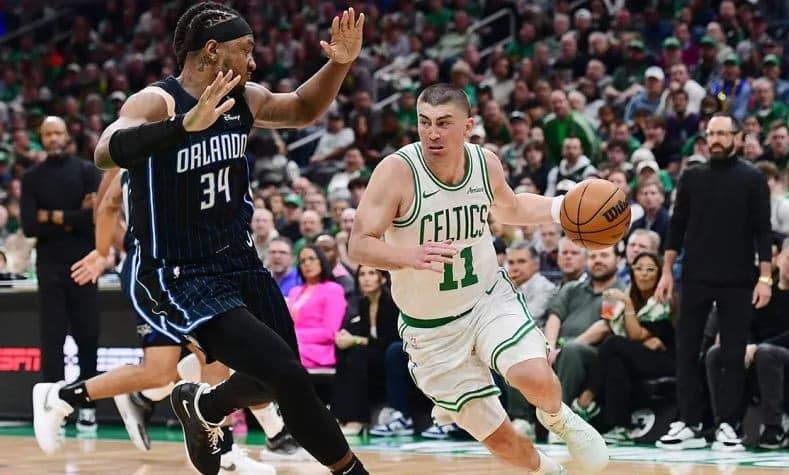Key Highlights:
- Basketball, like all aspects of life, is cyclical. And as a result, trends are constantly going in and out of style
- The giant centers we see in the 1990s/2000s were dying down in the 2010s, but it seems like they are making a comeback
- In the 1990s/2000s (and today) the best centers are generally heavier. In the 2010s, the best centers are generally lighter.
Life is cyclical. Fashion, music, movies, etc, all of them have trends that go in and out of style.
Sports – specifically, in this case, basketball – are no different. Yes, the game is played at a breakneck pace today. But it was also played like that in the 1960s. Part of what makes the game so fun is that it is constantly cycling through and recycling tactical and personnel-based trends.
And I think a really fun old trend has returned without us even realizing it.
Old School Centers Are Cool Again
In the offseason, I love watching historical hoops. And one of my favorite eras is the 1990s/2000s. The reason for this (outside of Michael Jeffrey Jordan) is all the statuesque giants that inhibited the game during that time. Shaquille O’Neal was obviously the best of the bunch. But there was also Hakeem Olajuwon, Dikembe Mutombo, Alonzo Mourning, David Robinson, Patrick Ewing, Vlade Divac, and Yao Ming (among others). The list goes on and on.
Anyway, as the game started to stretch out from the interior to more of a perimeter-centric game, these towers began to collapse, and they were replaced with smaller, skinnier, quicker centers. Hence, the emergence of the small ball five (the epitome of this was the 2020 Houston Rockets, who deployed PJ Tucker as their starting five).
For a while, it was believed that to win big in the playoffs, you can’t have a big, burly center camping out in the middle. You need a quick and agile center who can guard multiple positions. Bye-bye, Roy Hibbert. And hello, Nic Claxton.
But I don’t think that is the case anymore.
When It Hit Me
In 2020-21, the Los Angeles Clippers beat the Utah Jazz four games to two in the Western Conference Semifinals, despite Kawhi Leonard missing the final two games of the series. A big reason for this was their ability to stretch Rudy Gobert to the perimeter by fielding a small-ball lineup with guys like Marcus Morris and Nicolas Batum manning the five spot.
So, when the Clippers traded away Batum, Morris, Robert Covington, and KJ Martin to land James Harden at the start of the season, I was a little concerned. Not about the fit between Harden, Leonard, and Paul George (although I did have some questions). Rather, I was worried about them no longer having the small-ball lineup pitch to turn to when Ivica Zubac (and his backups) got played off the floor.
That’s when it hit me. Who in the West could seriously play him off the floor?
You need a big dude like Zubac to bang with brutes like Nikola Jokic and Anthony Davis. The same goes with Jusuf Nurkic, Alperen Sengun, and Domantas Sabonis. Gobert doesn’t really play in the post, but he also can’t force Zubac out to the perimeter with his shooting. Chet Holmgren is a stretch five, but his frail frame gives Zubac something he can expose on the other end of the floor.
The point of all this rambling is that there seems to be a lot of these “old school” centers congregating across NBA rosters.
Testing The Hypothesis
This wouldn’t be an edition of “NBA Study,” if we didn’t look at some numbers. This time, however, I decided to enlist the help of NBA analytics and visualizations expert Sravan (@SravanNBA on Twitter) to help us answer our question.
Before we get started, I should mention that our data only goes back to the 1996-97 season. I say “only” because the NBA has been around a lot longer than that. But, in reality, that limiter is perfect for our study because all the classical bigs I cited above were still playing in the NBA at that point.
Anyway, to start, we looked at the average weight of centers for every year from 1996-97 up until now. Sravan adjusted it to account for minutes played by these bigs so that we don’t have a back-end rotation guy cloud our sample. So, a center who played 100 minutes in the 2003-04 season won’t count as much as a center who played 2,000 minutes in that season. Anyway, here is what we got:

Average Weight of Centrs from 1996-97 NBA Season. Credit: @SravanNBA. Data provided by NBA.com.
Yikes. It looks like the average weight of a center is five pounds less than it was in 1996-97. End of study, right?
Not so fast. Sravan, the astute fellow he is, had the idea of looking at the average weight of the top-1o centers in the NBA. Maybe the very best bigs are as big and bulky as the ones from the 1990s/2000s.
While it’s not the perfect way to rank the top-10 centers of every season from 1996-97 to 2023-24, we decided to use the one-number metric DARKO DPM. Anyway, here is what we got:


Average Weight of Top 10 Centers. Credit: @SravanNBA. Data provided by NBA.com.
Woah. The trend that I hypothesized earlier is playing out in the graphic above. In 1996-97, the average weight of a top 10 center was about 256 pounds. That number peaked in 2006 and then rapidly declined until it was in the mid-240s in 2013. That number stayed relatively low during the mid/late 2010s (around the time of the Golden State Warriors’ dynasty). And since 2018, the average weight of a top 10 center has climbed back up to around 255 pounds – right around the figure it was at in 1996-97.
Sravan ran this same exercise for the top 10 centers in Offensive and Defensive DARKO, and while the numbers weren’t as similar as they are in the visual above, they paint the same picture. The average weight of NBA centers bottomed out during the mid/late 2010s and is currently rising back up near the levels it was at in the 1990s/2000s.
Another thing to note is that both in 1996-97 and in the present day, the top 10 centers weighed more than regular centers. For instance, the average center in 1996-97 weighed about 252.5 pounds. Meanwhile, as we said, the average top 10 centers in 1996-97 averaged a weight of about 256 pounds. In 2023, the average weight of a center was around 248 pounds. And the average weight of a top 10 center was about 255 pounds.
However, during the mid-2010s, it seems like the top 10 centers weighed less than the average center. In 2013, the average center weighed roughly 251 pounds. But, the top 10 centers had an average weight of about 248 pounds. So, during that era, being lean was what was all the rage.
What Does This All Mean?
It seems that history is repeating itself. Today, the best centers are massive, akin to how they were back in the day.
Now, it isn’t completely apples to apples. As the game has progressed, players have become more and more skilled. Today’s best bigs are more skilled than the Mournings and Ewings of the world. They are better passers, better shooters, more mobile defenders, etc.
But that doesn’t change the fact that bulky is back. There goes trying to play Zubac off the floor.
If you enjoyed this edition of “NBA Study,” be sure to check out some of our other ones, like this one we did on combo guards.





